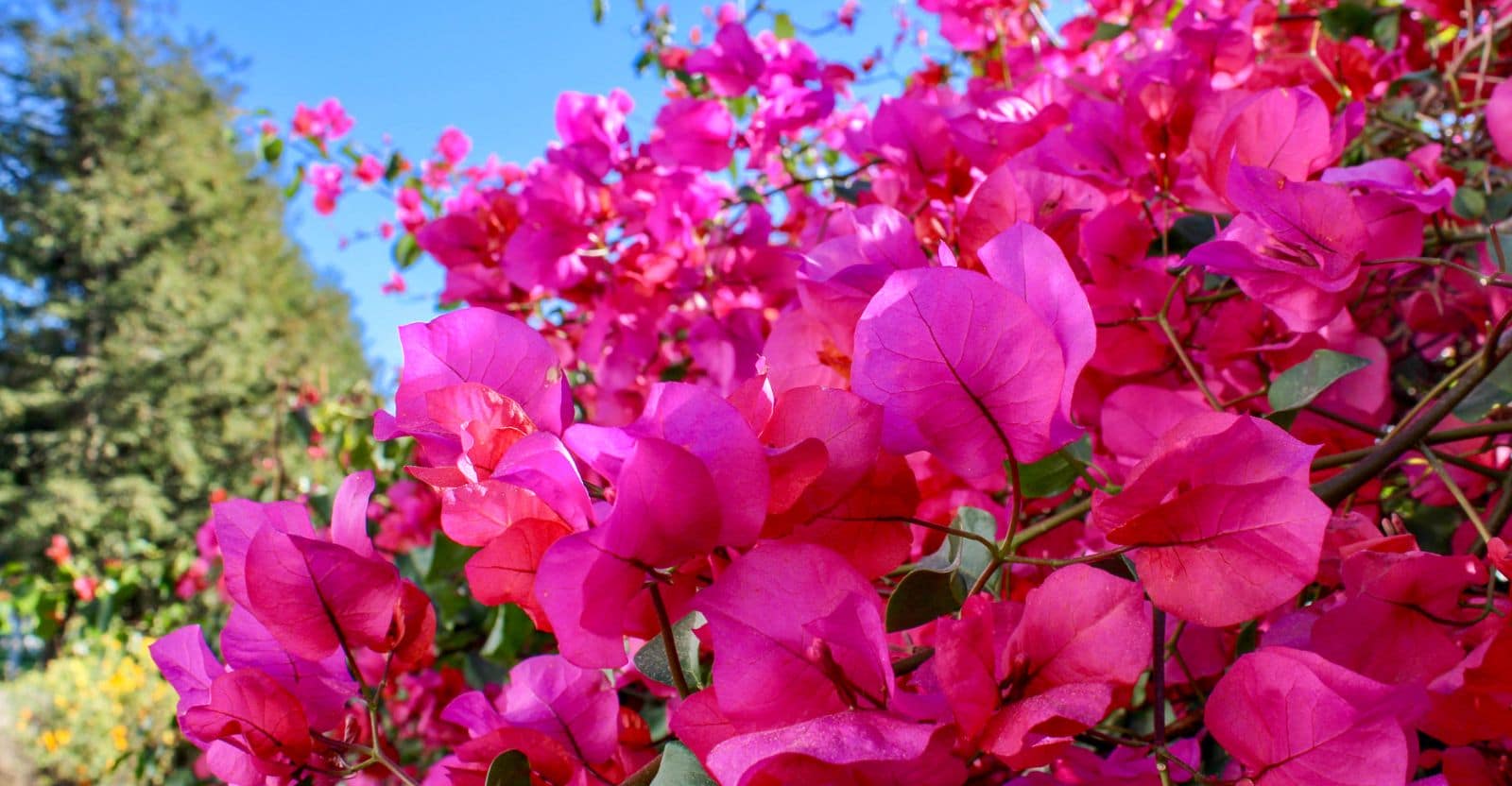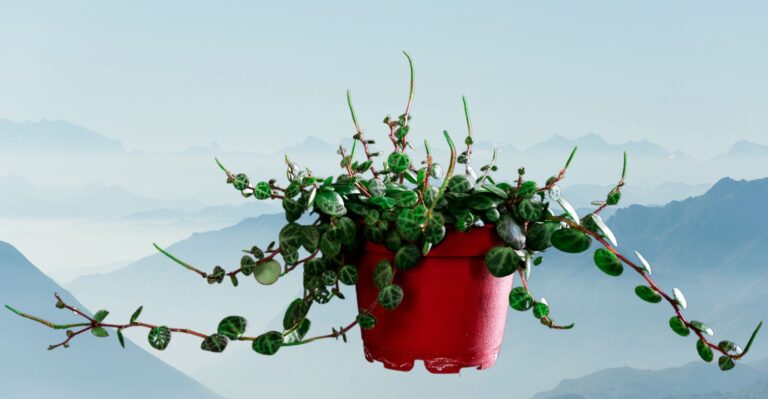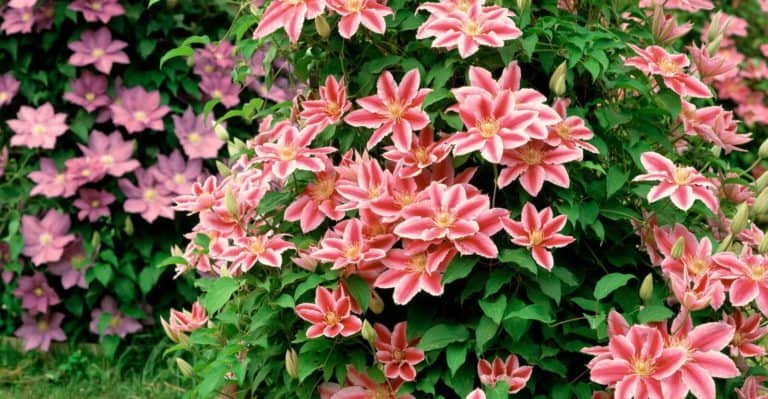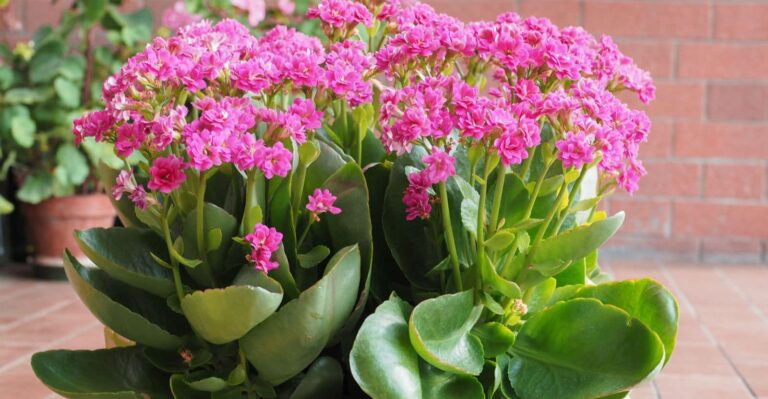Amazon has put together some great Home Gift Deals – save money and get your shopping done at the comfort of your home! Click here to see deals on Amazon
When you’re looking for easy-care ornamental plants, bougainvillea catches everyone’s eyes.
This hot season plant is native to South America and thrives in a tropical climate. It’s a great accent plant for landscaping in areas where it’s hard to grow traditional flowering plants.
It can be grown in containers (dwarf variety) and is easy to care for as a houseplant. It’s known for its beautiful purple, pink, or red papery bracts, which bloom all year in warmer climates. The plant can tolerate a variety of climates as it’s a very hardy plant with medicinal properties.
This guide will teach you how to grow and care for bougainvillea.
What is Bougainvillea?
Bougainvillea isn’t necessarily a flower but an evergreen vine with long, pointed leaves (bract) that grow along the stem. In a suitable climate, it can grow up to 30 feet tall.
It belongs to the four-o’clock family (Nyctaginaceae), and several of its species have woody and thorny vines. A new gardener may find it a bit challenging, but it can make a beautiful addition to any garden with the proper care.
These are generally climbers, but you can groom them to become bushy, making them a great addition to growing containers, hanging baskets, and potted plants.
It’s a highly versatile perennial plant that can be grown in full sun to partial shade. The stems, flowers, and leaves have different colors, depending on the cultivar.
The bougainvillea plant flowers are bracts that are modified leaves that are long-lasting and bright with a longer bloom cycle.
The actual flower blooming happens all over the year, but they’re plentiful during the winter. Some dwarf varieties can grow anywhere from 1 foot to 10 feet tall, while others can reach up to 30 feet.
The small white tubular flower surrounded by three large paper-like bracts makes it look stunning.
What are the varieties of bougainvillea?
There are several varieties of this tropical vine that produce brilliant flowers in a wide range of colors. It’s trendy because it’s so easy to grow, and it’s even good at growing under challenging conditions.
Here are some popular varieties:
California Gold bougainvillea
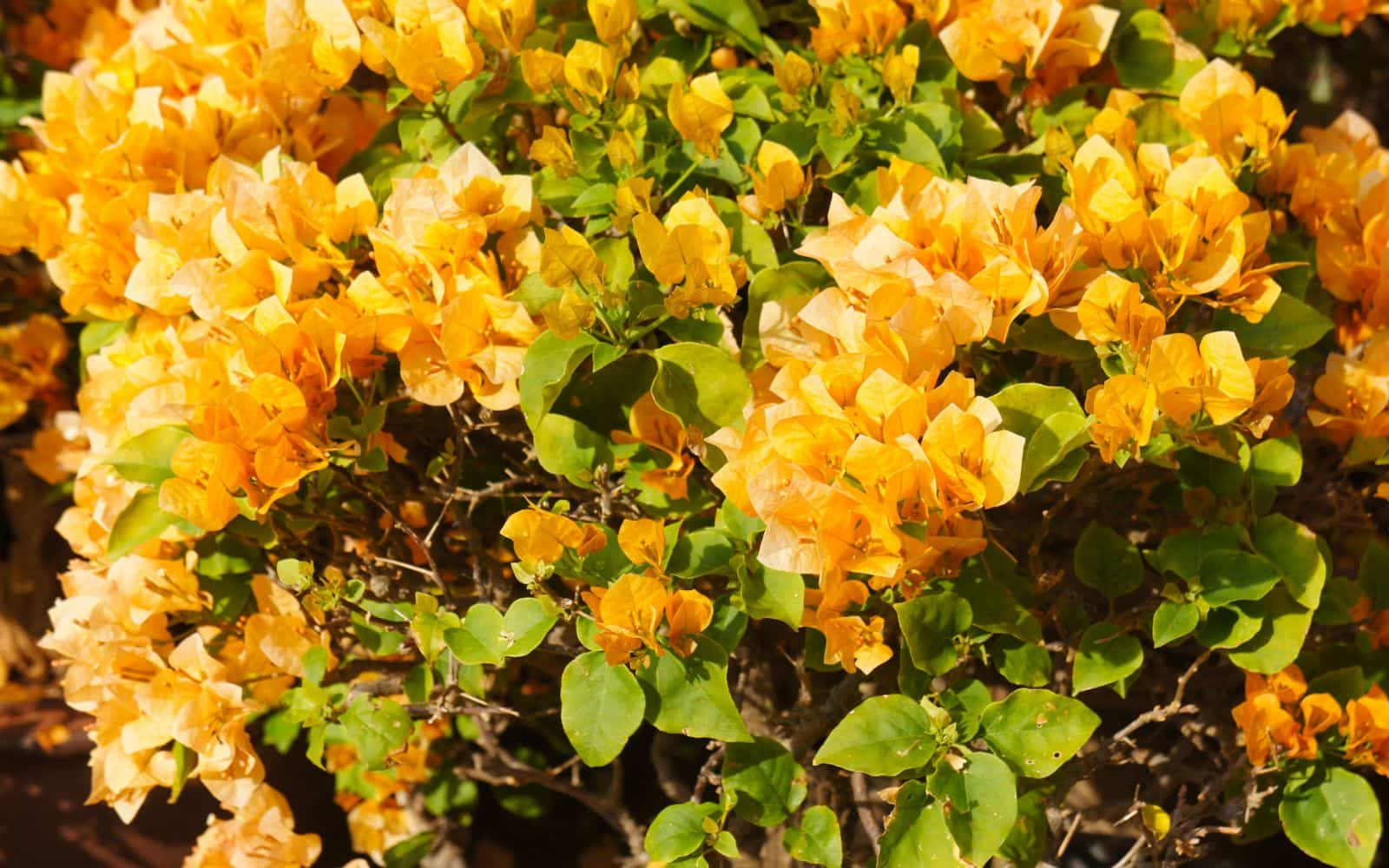
It’s swift to bloom with yellow bracts in early summer. It can grow up to 30 feet tall that grows best in USDA 9–10 zones.
Buy California Gold bougainvillea
Sundown Orange bougainvillea
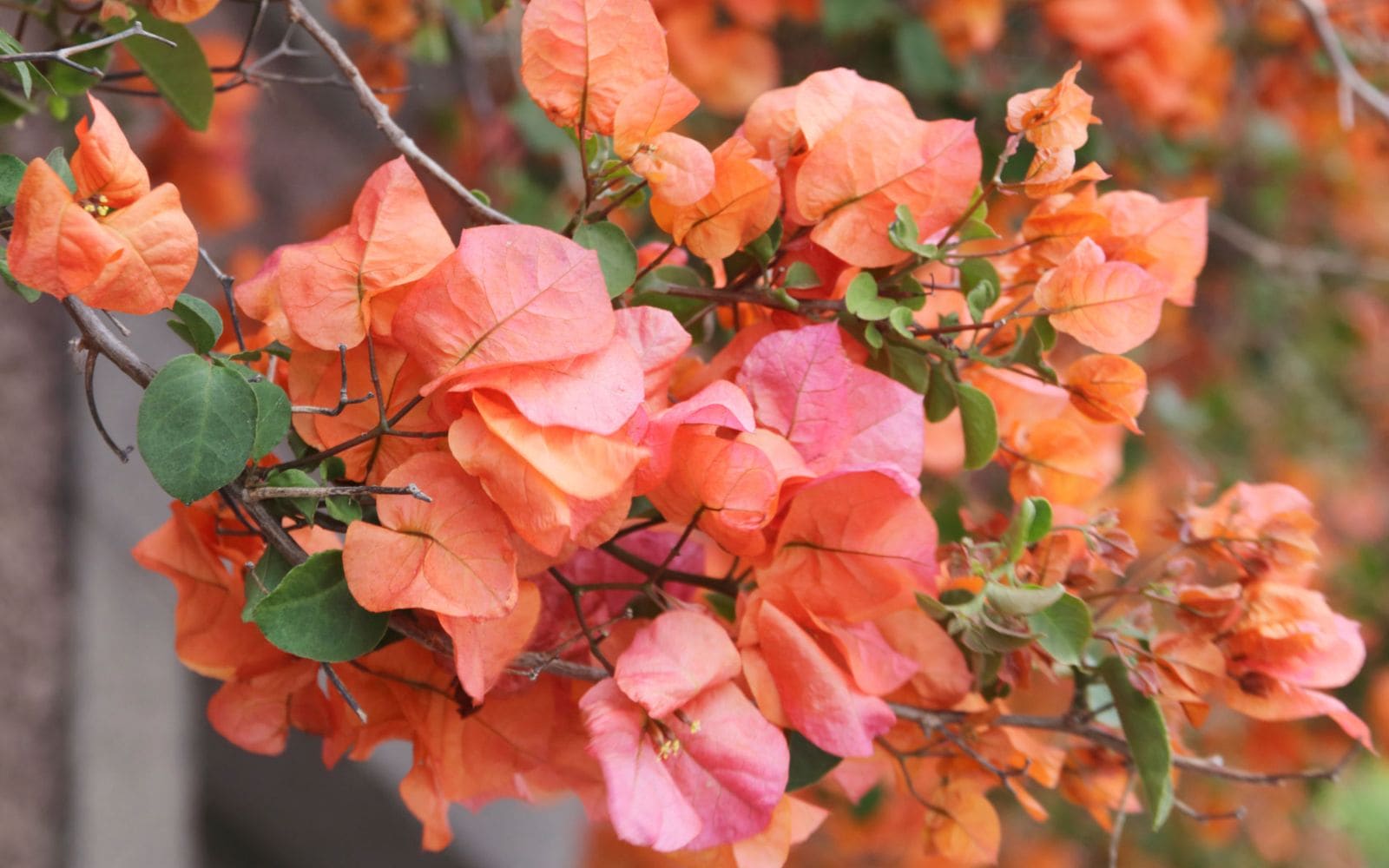
It has a unique, beautiful flower that makes it a favorite among gardeners and landscapers. You can grow it well in semi-shady areas, and it’s very suitable for containers.
Spectabilis bougainvillea

This is a resilient plant that can thrive in a wide range of settings. It grows up to 8 feet tall and has thorny ornamental vines.
Santa Rita bougainvillea
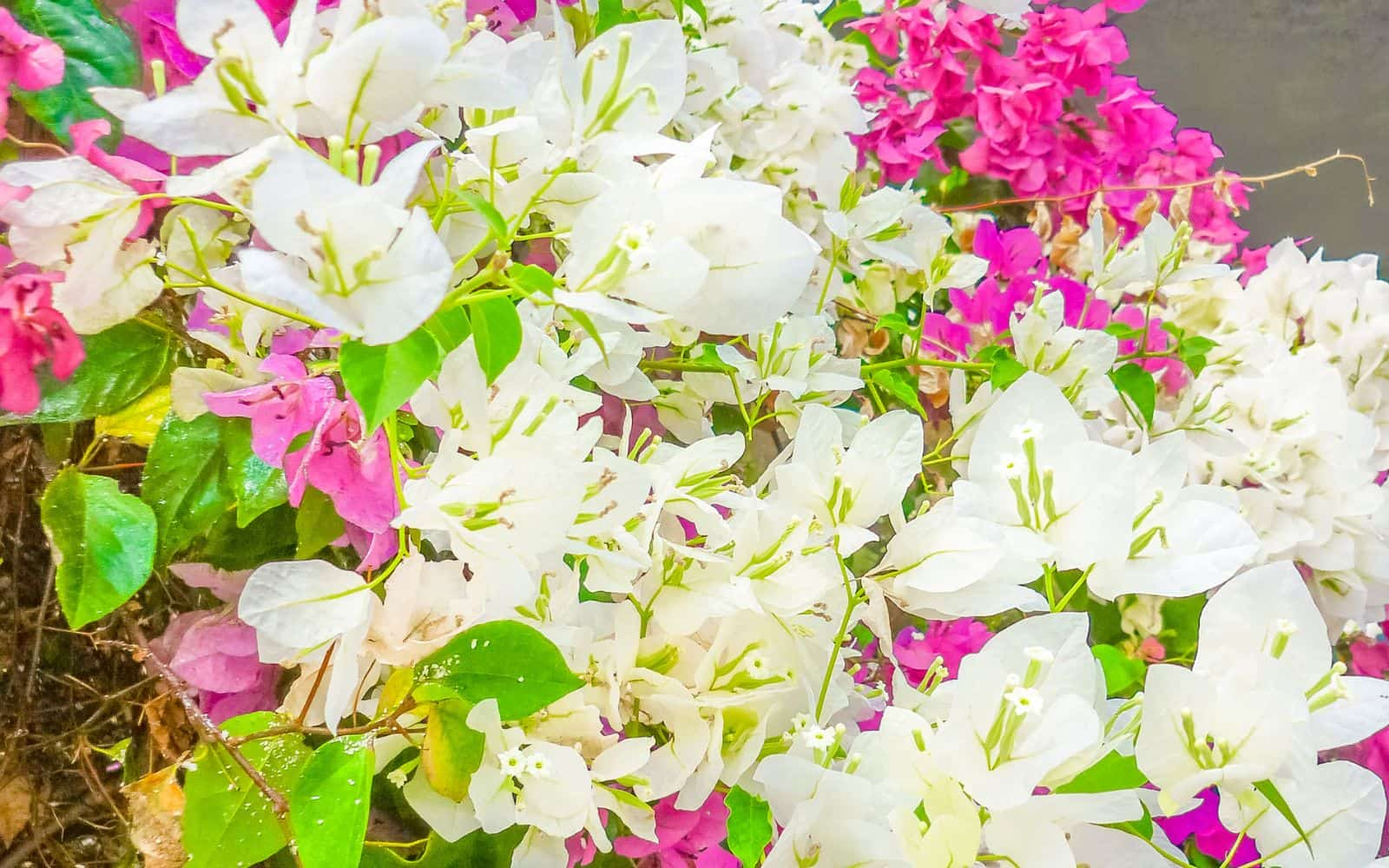
It’s native to Central and South America, where it grows up to 20 feet tall. It adds color to a patio or deck with a bit of work.
Jamaica White bougainvillea

It has white, veined bloom, and if you’re looking to cultivate bougainvillea for its flowers, then it’s a good choice.
Barbara Karst bougainvillea
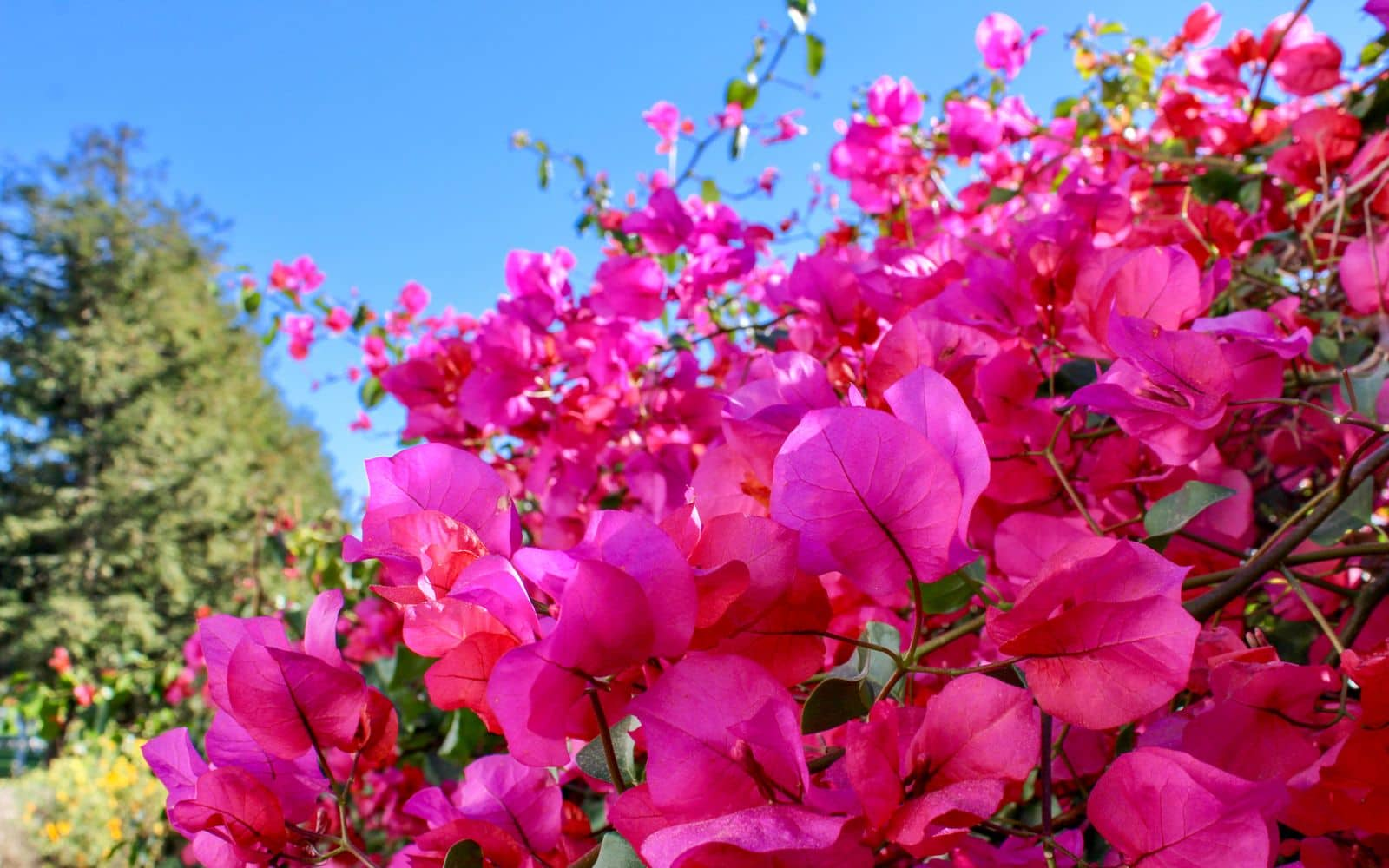
It has large clusters of red bracts that bloom all summer and autumn. It grows well in full sunlight with dry soil and is a fast grower (up to 40 feet tall).
Buy Barbara Karst bougainvillea
Plant growing summary
| Factor | Growth Condition |
|---|---|
| Soil | Well-drained moist soil |
| Water | Deep watering every 3–4 weeks |
| Sunlight | Full sun |
| Temperature | 60 to 70 degrees Fahrenheit |
| Fertilizer | A balanced fertilizer (8-8-8) |
| Propagation | Stem and leaf-cutting, grafting |
| USDA Zone | 9 – 11 |
How to propagate bougainvillea
There are several reasons why you may want to propagate bougainvillea plants. Some may have grown them from seeds, which take longer to produce flowers, while some may have purchased them from a nursery.
Nurseries and garden centers often sell plants that aren’t of the same variety as the original plant. Usually, bougainvillea grows best in the warm climate. But if you live in a relatively cold environment, you can propagate it in a hanging basket, container, or indoor pots.
Stem cutting is the easiest and the best way to propagate bougainvillea. Late spring to mid-summer is the best time for stem propagation due to the higher growth rate.
Bougainvillea stem cutting propagation
Step 1: Select a healthy woody vine plant, and using a sanitized scissor or pruner, cut an 8 to 10 inches long semi-ripe or hardwood stem at a 45-degree angle.
Ensure that there are 5 to 7 nodes in the stem that helps with the root growth. Take as much stem cutting as you need. Don’t use any part of the green branch as it’s not suitable to grow roots.
Step 2: Remove any flowers or bougainvillea leaves from the stem while leaving a few leaves at the top. This helps plants to divert their resources to developing roots. If you’re ready to plant right away, dip the cutting part in the rooting hormone to encourage propagation.
You should wrap it in a damp paper towel and put it in an airtight plastic bag if you don’t want to plant it right away. Storing it in a refrigerator will keep it ready to grow within the next few weeks.
Step 3: Prepare the potting mix that contains organic compost, perlite, and sand. If you’re going to transplant it later, use a small container as it makes bougainvillea care easy. Insert the cut portion of the stems 2 to 3 inches deep in the soil.
Step 4: Water it thoroughly, and don’t disturb the soil afterward. To help retain the moisture, cover it with plastic wrap.
Place the container in a cool and shady spot, away from direct sunlight. It usually takes 60 to 70 days for the root to start forming and the new cuttings begin to sprout.
Step 5 (Optional): You can transplant it to a bigger pot once the new propagation has 8 to 10 leaves on it. Move the plant with soil around it to prevent any damage to the roots.

How to care for bougainvillea
Knowing a few essential growing tips helps you successfully grow it indoors or outdoors. You can have brilliant colors of a bougainvillea in your home and garden to add a splash of color to any space.
Soil
Bougainvillea requires well-drained loamy soil. You can prepare a high-quality organic potting mix with compost, perlites, and sand to provide enough drainage while retaining moisture in the ground. Use an equal proportion of clay, sand, and silt in the soil.
Ensure the soil pH ranges between 6 to 6.5. You can use a soil tester to measure the pH and amend the soil if it’s not in the desired range.
Choose a higher ground location to plant as it prevents waterlogging. Provide space of at least 10 to 12 inches to let it spread as it grows.
Water
Bougainvillea only needs about 1/4 to 1/2 inch of water each week, depending on the heat and humidity, to remain healthy. It’s better to plant it in a large container, such as a tub or barrel that makes it easy to water.
The container should be at least two feet deep and hold at least five gallons of water. This will ensure the roots are adequately watered.
They can also be planted in the ground but will need frequent watering, especially during summer. You should also be careful not to overwater as it may cause root rot.
You should do deep watering every week or two rather than more frequent but shallow watering. Some people also like to set up drip when planting it outdoor. You can set it up to get deep-watered twice a week for a few hours. Don’t overwater to prevent it from getting root rot.
Fertilizer
Different bougainvillea species like different types of fertilizer. With that said, the fertilizer you choose to use depends entirely on the growth you want to stimulate. Some bougainvillea varieties are known for growing larger and more quickly than others.
If that’s what you want, you should use a fertilizer with high nitrogen content. However, if you would rather keep your bougainvillea short and compact, you should fertilize it with a fertilizer high in phosphorous instead.
Adding regular fertilizer to it helps it grow fast. They prefer few nutrients available regularly, and using a slow-release fertilizer is a great option to have.
During a blooming season, you can add liquid fertilizer every seven to ten days. There are several fertilizers blends available in the market for hibiscus and tropical plants.
You can also add a layer of compost or solid organic fertilizers once a month to maintain balanced nutrient levels in the soil. If you’re using liquid fertilizer, use it once every week during the summer and spring but slow down during fall and winter.
Temperature
Bougainvillea is a hardy plant that grows well in zones 9 to 11. Even though these are tropical plants and require warm weather, they can handle a bit of cold without hampering growth.
More matured and established plants can handle cold better than newly propagated plants. The ideal temperature for bougainvillea is from 60 to 70 degrees Fahrenheit.
When planting it in a container, you should bring it indoors when the temperature falls below 50 degrees. The trick is to give them enough sunlight and warmth to survive.
Bougainvillea needs at least 6 to 8 hours of full sunlight to grow and flower. You won’t get many vibrant colors without the required sunlight. You can plant it at a location where it can get the necessary amount of the sun if you plan to climb it on a wall or trellis.
When planting indoors, place it where it can get full sunlight. Otherwise, you will get good leaves on it but no bloom. Putting it where it can get ample sunlight will keep it blooming.
If you’re in a cold climate and can’t provide it with sufficient sunlight, look for varieties that are resistant to cold weather. You can also grow them in containers so you can move them indoors during winter.
Pruning
Regular pruning and pinching help it bloom on new growth and encourage flowering. Selectively pinching the plant’s tender ends provides denser and rich color flowering over a period of time.
You can use sterilized pruning shears to get a cleaner cut that prevents any infection. Don’t forget to use work gloves to prevent sharp thorns from causing any injury to your fingers. Some varieties may cause skin irritation when in contact.
The best time to prune bougainvillea is around late winter or early spring. You should also remove any deadhead or rotten stems. Pruning it during this time helps with a new growth cycle that encourages fresh blooms from the shoots.
What kills a bougainvillea?
Many types of pests attack bougainvilleas, such as aphids, mildew, caterpillars, and slugs. These pests arrive in the garden as the weather continues to warm up. Aphids are among the first to attach to the soft leaves, and new grow-ups, sapping away the plant’s energy and vigor.
An easy way to combat it’s by hosing them off whenever you spot them. Also, make a homemade soap spray to keep them at bay. Also, be on the watch for the beginning stages of powdery mildew disease, a light, white powder formed on the foliage and stems.
Ensure that plants are getting good air circulation and use homemade mildew control to prevent a severe problem. Keeping the area free from weeds also allows the bougainvillea to grow at its full and prevents it from getting starved of nutrients.
Why your bougainvillea won’t bloom?
There are several reasons for bougainvillea to not bloom. The main reason for not blooming is due to it not getting sufficient sunlight or getting too much water or fertilizer.
The more sunlight the bougainvillea gets, the more blooming and vibrant color the plant generates. It can bloom all year round in some warm climates, but you can get it to bloom for 8 to 10 months in cooler climates with some care.
You should also let it grow full before you start pruning to give it a shape. Aggressive pruning causes the plant to focus its energy on leaves rather than putting resources for flowering.
If you’re using fertilizer, slow it down when it comes to the blooming time, as too much nitrogen in the soil encourages it to produce more leaves than flowers.
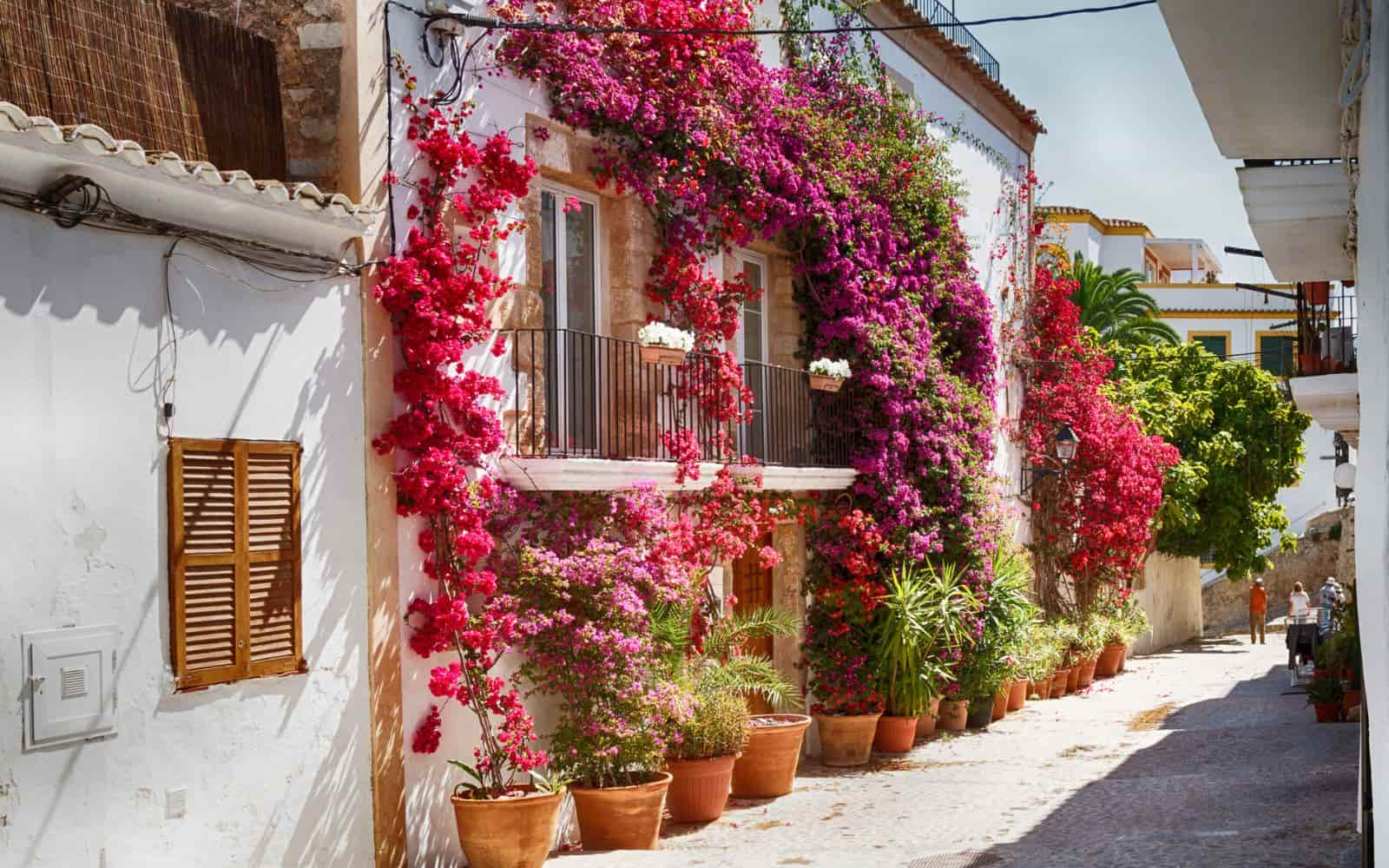
How to grow bougainvillea on a wall
Bougainvillea is a climbing vine, and many people like it to cover the wall with its beautiful colorful bracts flowers. Before planting it, you need to know what type of wall you plan bougainvillea to climb and what kind of soil you will use.
Bougainvillea is easy to train to climb on walls, trellises, arbors, or any structure. It’s easier to choose a climber variety that grows aggressively and has a long and sturdier vine. When planting it in a container, use a larger pot to let its roots spread out.
When the vine has grown a couple of inches tall, you can start moving it around the wall to encourage it to climb. Bougainvillea won’t climb itself without this extra help. You can use straps to loosely tie it around the wall to hold on to the structure naturally.
You can also prune the excess growth to make it look appealing on the wall. With some care and help, you can quickly cover the wall with different colors.
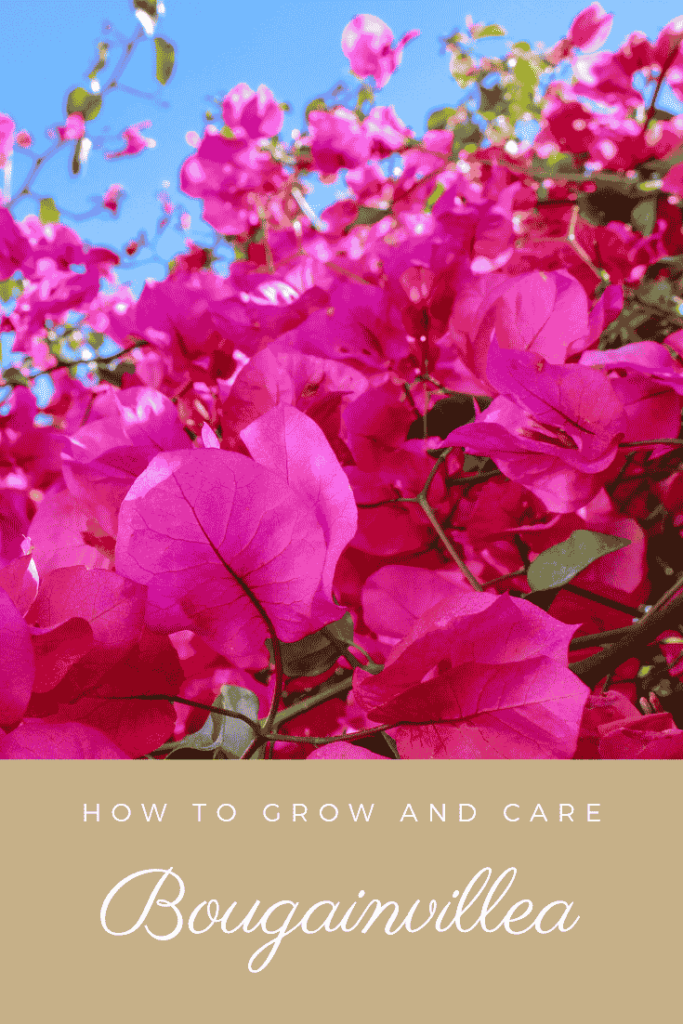
Don’t forget to share this post

